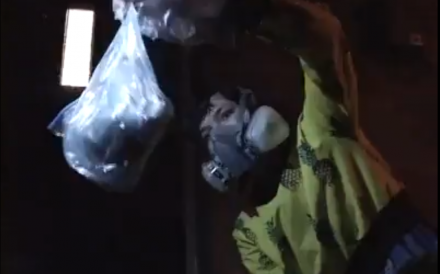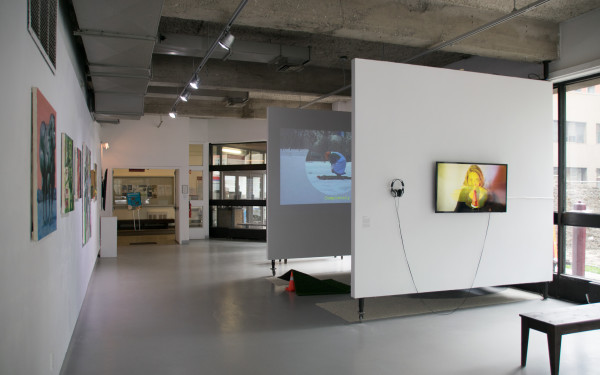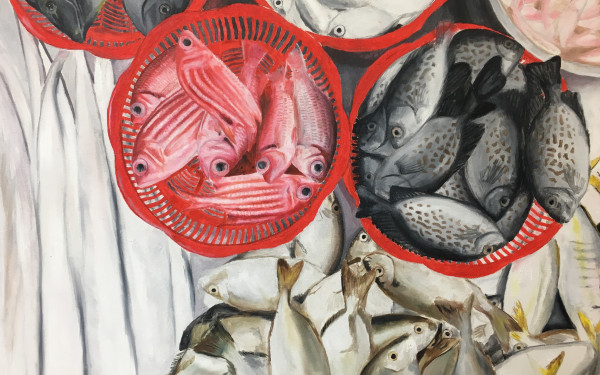Not For the Birds: Concordia Artist Madeleine Gendreau Turns Pigeon Carcasses Into Art
When my friend and artist Madeleine Gendreau, a student of Fine Arts at Concordia, asked me to keep a look out for dead pigeons, I enthusiastically agreed. In support of her artistic endeavours, I would scour the streets of Montreal for deceased fowl.
She had contacted all her friends in the hopes that they had seen one, called taxidermy agencies and, finally, thought she had struck gold when Concordia’s Biology Department said they could order one for her. Unfortunately all the dead pigeons were on back order and the frustrated artist was back to square one.
“I asked some friends [to look for a dead pigeon] and my friends went out and started looking, and then one found me a pigeon under an overpass at René-Lévesque [Blvd.] and Guy [St.], and so that was my pigeon.” she said.
If you’re wondering what was giving her bird fever, the project began with Urban Clay, an advanced ceramics class she was taking. The plan was originally to make a mold out of an entire dead pigeon, and from the mold make ashtrays to place in smoking areas around the university, to be installed the second week of April.
“There were two main sources of inspiration for the project,” she told me. The first was the documentary Pigeons in the City, which chronicles the relationship between people living in metropolitan areas and urban wildlife.
“After watching that, I was talking to my father about wildlife and how a lot of animals can’t communicate with one another because the frequencies of machines in the cities interrupts their conversations,” she explained.
Equally inspiring was the San Francisco-based organization Rebar Design Group, an “interdisciplinary studio working at the intersection of art, design and ecology,” according to their website.
Madeleine stumbled on the group while looking up ecology-based design, and was intrigued by their project in collaboration with California College of the Arts in which seabirds whose habitat off the coast had been destroyed were rehabilitated.
She hoped to bring some of that awareness to Concordia’s campus.
“Very literally putting the cigarette out in a pigeon, in its digestive tracts [will take] away the moment of ‘oh, whatever, I threw something in the trash and maybe it’ll hurt something one day,’” Madeline added. It was all in hopes of making people realize the direct impact they’re having on urban wildlife, she told me.
Ironically, the quest to improve the welfare of animals was to be accomplished through the desecration of one unfortunate feathered urbanite.
Rather than make a mold out of the entire pigeon, Madeleine realized she would have to construct the body out of clay and use only the wings and feet for molds. This would involve hacksawing the aforementioned parts off.
Let me take a minute to state that Madeleine has been a vegetarian since the age of four. Nevertheless, artistic passion prevailed over vegetarian squeamishness.
“I didn’t really think about [taking the pigeon apart]. There was a degree of thinking about my vegetarian sensibilities and how it was bad, but in reality I mean the animal’s dead already, and everything is a little bit transient.”
The project meant “giving this animal a different sort of life than it would have had if it had just had stayed under the underpass at René-Lévesque and Guy,” she philosophized.
She felt especially uncomfortable when the bone snapped, she said.
“But at least its self-actualization is going farther than what it would have been at that intersection; at least this way it gets to be somewhat immortalized,” she concluded.
“Did you give it a name?” I had to ask.
“Foxy Cleopatra,” she responded. She and her roommate, an avid watcher of The Simple Life, had been tied between Foxy Cleopatra (the name of Paris Hilton’s dog in the show), and Foxy Paul “because, you know, we didn’t want to restrict our pigeon to a gender.”
When I asked Madeleine if she had any future plans for Foxy Cleopatra, she responded enthusiastically.
“I would actually really like to taxidermize the pigeon—we still have it, it’s in our backyard. [I would] decorate it with like, some gold chains and shit. It’s a whole world you know, the internal happenings of an animal,” she said.
“You know, I think the best art is nature, so we should in some ways replicate our view of that nature.”“In this hypothetical taxidermied dead pigeon, why the gold chains?” I asked.
“I don’t know, I was just listening to Riff Raff honestly. In that moment gold chains were just very apparent.”
For more on this story, tune in to Link Radio on CJLO 1690AM on March 27 at 11 a.m.


_600_832_s.png)




3__600_375_90_s_c1.jpg)